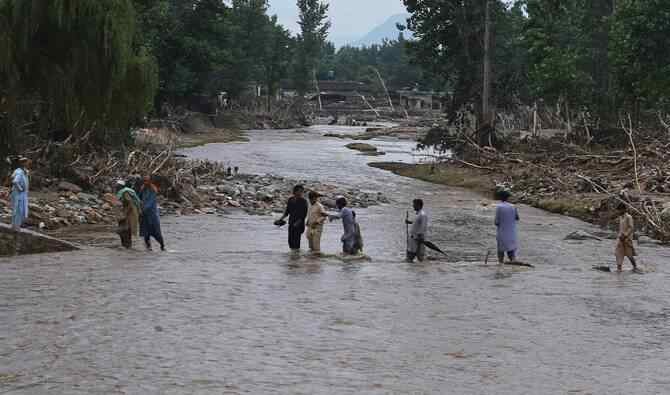ISLAMABAD / PESHAWAR / GILGIT — Pakistan is reeling under one of the deadliest monsoon seasons in recent years, as floods and rain-related incidents have killed at least 657 people since late June, according to the National Disaster Management Authority (NDMA). Officials warn the crisis is far from over, with two to three more monsoon spells expected in the coming weeks, potentially 50–60% heavier than average.
Heavy Toll Across Provinces
The latest reports highlight 140 new fatalities, most of them in Khyber Pakhtunkhwa (KP) and Gilgit-Baltistan. Buner district in KP has emerged as the worst-hit, where floods alone claimed over 400 lives, left 671 injured, and destroyed nearly 2,300 homes. Schools, police stations, livestock, and farmland have also been wiped out.
Overall, NDMA data shows:
- Khyber Pakhtunkhwa: 390 deaths (59 children, 43 women).
- Punjab: 164 deaths, with children making up the largest share (70).
- Sindh: 28 deaths, including 14 children.
- Balochistan: 20 deaths, more than half of them children.
- Gilgit-Baltistan: 32 deaths.
- Azad Jammu and Kashmir: 15 deaths.
- Islamabad Capital Territory: 8 deaths.
The distribution underscores KP’s disproportionate exposure to extreme weather, where flash floods, cloudbursts, and landslides have devastated mountain valleys.
Relief and Rescue in Overdrive
The armed forces, along with NDMA and provincial disaster agencies, are leading ongoing relief efforts. Soldiers, rescue personnel, and volunteers are evacuating stranded families, setting up relief camps, and restoring damaged link roads.
International and local charities are also on the ground:
- Alkhidmat Foundation: distributing cooked meals, water, and dry milk.
- Pakistan Red Crescent Society: providing tents, medical camps, and ambulances.
- Islamic Relief, Penny Appeal, WHH, IDEA: delivering food and supplies.
- Edhi Foundation: deploying ambulances and rescue vehicles.
- KS Relief and Secours Islamique France: distributing hygiene kits, tents, and cooking sets.
Prime Minister Shehbaz Sharif has instructed federal ministers to personally oversee aid distribution in affected districts of KP. Additional truckloads of food, tents, and medicines are being dispatched under the PM’s Relief Package.
Rivers Rising, Dams Near Capacity
In Punjab, river levels have surged to dangerous highs. The Sutlej River has inundated villages in Kasur after discharges at Ganda Singh Wala headworks touched 75,000 cusecs, with further flooding possible due to releases from India’s Harike Headworks.
Meanwhile, NDMA General Manager Zahra Hassan warned that Tarbela Dam is already at 98% capacity, raising fears of critical overflow during the next rainfall spell.
Climate Change Driving Extreme Weather
Lt Gen Inam Haider, NDMA Chairman, said this year’s monsoon has been unusually intense due to higher summer temperatures fueling atmospheric instability. He directly linked the worsening pattern to climate change, stressing that Pakistan’s northern valleys such as Buner, Battagram, and Bajaur are increasingly vulnerable.
He confirmed that the monsoon season will continue until at least September 10, with isolated regions of KP and Gilgit-Baltistan still cut off due to landslides and floods. Search and rescue operations remain active, while technical teams race to restore communication networks and roads.
What Lies Ahead
With three major weather systems converging over Pakistan, NDMA’s contingency plan identifies KP, AJK, and parts of Sindh as high-risk zones in the coming days. Cloudbursts remain possible in Rawalpindi, Murree, and Galliyat, while heavy downpours are forecast in Lahore, Sialkot, Faisalabad, and Multan.
For millions of Pakistanis, the weeks ahead could bring further hardship. Relief agencies caution that the humanitarian toll may rise as waterborne diseases, displacement, and food shortages follow the floods.

